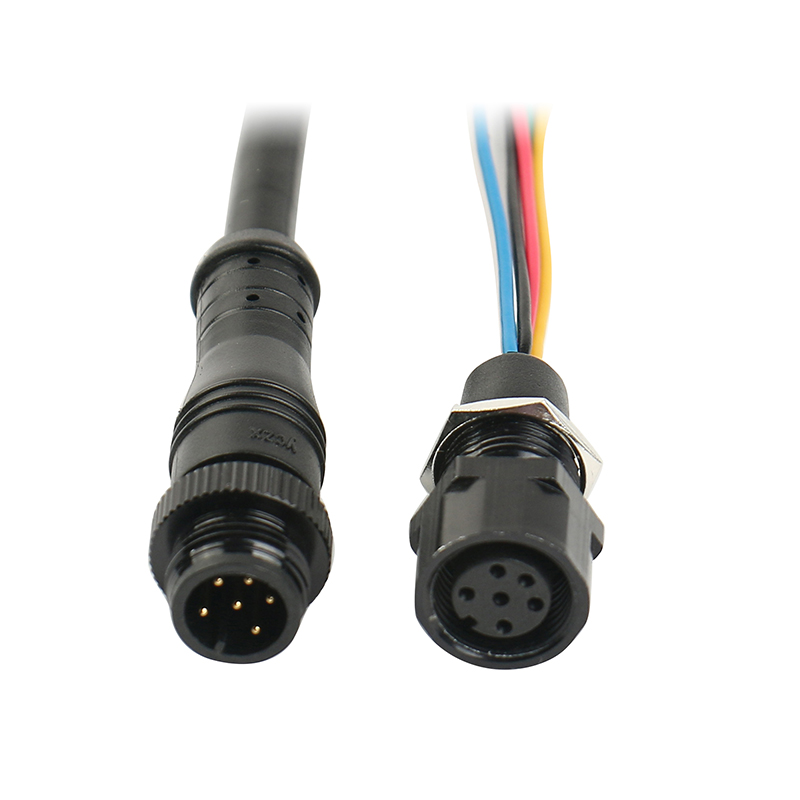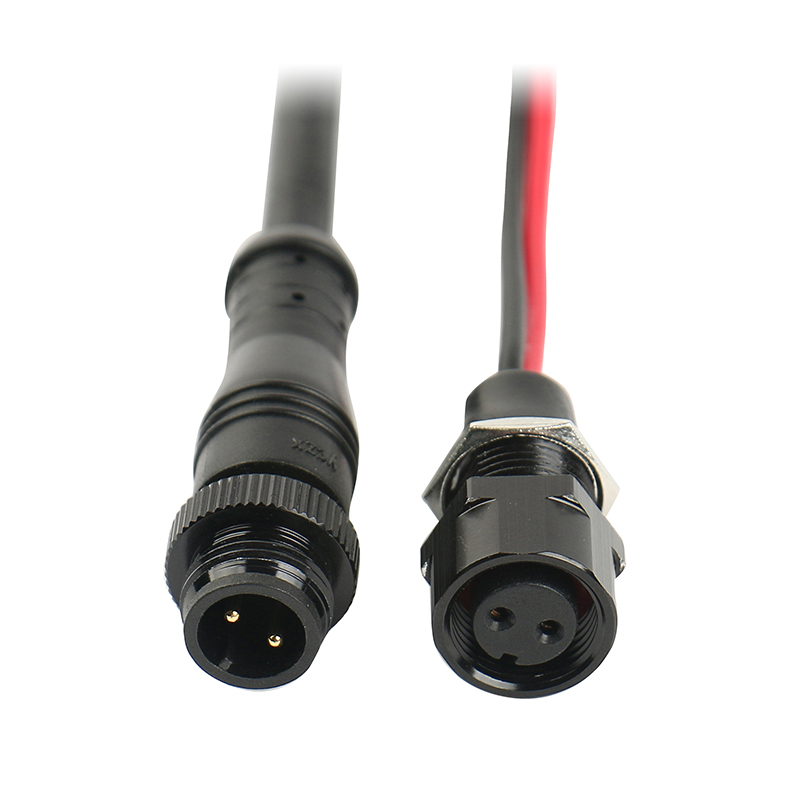News


News

Shining Through the Storm: A Guide to Waterproof Light Sockets
Release time:2024-06-07
viewed:1400
In the realm of lighting fixtures, durability, and safety are paramount considerations, especially in environments where moisture or water exposure is a concern. Waterproof light sockets offer a robust solution to this challenge, providing reliable illumination in wet conditions while ensuring the safety of electrical connections.
As we delve into the world of waterproof light sockets, we uncover the innovative design features and applications that make them essential components in outdoor, industrial, and marine lighting systems. Join us as we explore the benefits, features, and considerations of waterproof light sockets, illuminating the path to enhanced lighting solutions in any environment.

Waterproof light sockets are specialized electrical components designed to provide a secure and watertight connection for light bulbs in environments where moisture, humidity, or water exposure is a concern. These sockets feature a robust construction and sealing mechanism that prevents water ingress, ensuring the safe and reliable operation of lighting fixtures in damp conditions.
Waterproof light sockets are commonly used in outdoor, industrial, marine, and other moisture-prone environments where traditional sockets are susceptible to damage or corrosion.
In environments where moisture is present, standard light sockets can pose serious safety hazards and lead to premature failure of lighting fixtures. Moisture ingress can cause corrosion of electrical contacts, insulation degradation, and short circuits, potentially resulting in electrical shocks, fires, or equipment malfunction.
Waterproof light sockets for sale address these concerns by providing a protective barrier against moisture, ensuring the integrity of electrical connections and the longevity of lighting systems. Their importance in moisture-prone environments cannot be overstated, as they provide a critical layer of protection for both electrical safety and the longevity of lighting infrastructure.
1. IP Rating and Waterproofing Standards:
Waterproof light sockets are classified according to their level of protection against moisture and foreign objects, as defined by their IP (Ingress Protection) rating. The IP rating consists of two digits, with the first digit indicating the degree of protection against solid objects and the second digit indicating the degree of protection against liquids.
For example, a light socket with an IP67 rating is completely protected against dust ingress (6) and can withstand immersion in water up to 1 meter deep for 30 minutes (7). Manufacturers adhere to various waterproofing standards, such as those set by the International Electrotechnical Commission (IEC), to ensure the reliability and effectiveness of waterproofing measures.
2. Corrosion-resistant Materials:
Waterproof light sockets are constructed from corrosion-resistant materials that can withstand exposure to moisture, humidity, and harsh environmental conditions. Common materials used in the construction of waterproof light sockets include stainless steel, brass, aluminum, and high-quality plastics such as PVC or polycarbonate.

These materials are chosen for their durability, corrosion resistance, and ability to maintain electrical conductivity over time. Additionally, waterproof light sockets may feature specialized coatings or treatments to further enhance their corrosion resistance and extend their service life in challenging environments.
3. Secure Electrical Connections:
Ensuring secure electrical connections is essential for the safe and reliable operation of waterproof light sockets. These sockets are designed with features that prevent moisture ingress and maintain proper contact between the light bulb and electrical wiring. Spring-loaded contacts, terminal screws, or soldered connections are commonly used to establish a secure electrical connection while minimizing the risk of corrosion or loosening over time.
Waterproof light sockets may include sealing gaskets, O-rings, or potting compounds to provide a watertight seal around electrical connections, further enhancing their reliability in moisture-prone environments.
By incorporating these key features, waterproof light sockets offer dependable performance and peace of mind in applications where moisture protection is critical.
1. Outdoor Lighting Fixtures:
Waterproof light sockets are extensively used in outdoor lighting fixtures to provide illumination in gardens, pathways, driveways, parking lots, and other exterior spaces. These sockets are essential for ensuring the longevity and reliability of outdoor lighting systems, as they protect against moisture ingress from rain, snow, and humidity.
Waterproof light sockets enable the installation of outdoor lights in various weather conditions, allowing homeowners, businesses, and municipalities to create well-lit and safe outdoor environments.
2. Industrial and Commercial Facilities:
In industrial and commercial facilities, waterproof light sockets play a critical role in providing reliable illumination in challenging environments such as warehouses, manufacturing plants, garages, and parking garages. These sockets are designed to withstand exposure to dust, dirt, moisture, and chemical vapors commonly found in industrial settings.
Waterproof light sockets ensure the safety of workers and equipment by preventing electrical hazards and maintaining consistent lighting levels for optimal visibility and productivity.
3. Marine and Nautical Environments:
Waterproof light sockets are indispensable in marine and nautical environments, where exposure to saltwater, high humidity, and rough weather conditions poses unique challenges. These sockets are used in a wide range of marine lighting applications, including navigation lights, deck lights, cabin lights, and underwater lights.
Waterproof light sockets are constructed from corrosion-resistant materials such as stainless steel or marine-grade brass to withstand the corrosive effects of saltwater and ensure reliable performance in marine environments. By providing watertight electrical connections, waterproof light sockets contribute to the safety and efficiency of vessels and marine structures, enhancing visibility and navigational capabilities on the water.
1. Screw-in Sockets:
Screw-in sockets, also known as Edison sockets, are the most common type of light socket used in residential, commercial, and industrial lighting fixtures. These sockets feature screw threads that allow light bulbs to be securely screwed into place, forming a reliable electrical connection. Waterproof screw-in sockets are designed with sealing gaskets or O-rings to prevent moisture ingress and maintain a watertight seal.

They are suitable for a wide range of applications, including outdoor wall sconces, post lights, and floodlights, where they provide secure and weather-resistant lighting solutions.
2. Twist-lock Sockets:
Twist-lock sockets are characterized by a locking mechanism that secures the light bulb in place by twisting it into position. These sockets are commonly used in outdoor and industrial lighting fixtures where vibration or movement may loosen traditional screw-in sockets. Waterproof twist-lock socketsfeature a locking collar or bayonet-style mount that ensures a tight seal between the socket and the light bulb, preventing water intrusion.
They are ideal for applications such as outdoor security lights, high-bay fixtures, and commercial floodlights, where reliability and durability are essential.
3. Pin-based Sockets:
Pin-based sockets, also known as bi-pin sockets, utilize two or more metal pins to make electrical contact with the base of the light bulb. These sockets are commonly found in compact fluorescent lamps (CFLs), linear fluorescent tubes, and some LED light bulbs. Waterproof pin-based sockets are designed with protective covers or enclosures to shield the electrical connections from moisture and ensure safe operation in wet or damp environments.
They are often used in outdoor landscape lighting, underwater fixtures, and specialty lighting applications where space is limited and moisture protection is critical.
Each type of waterproof light socket offers unique advantages and is suited to different applications based on factors such as installation requirements, bulb compatibility, and environmental conditions. By choosing the appropriate type of waterproof light socket for a specific application, users can ensure reliable performance and longevity in moisture-prone environments.
1. Environmental Conditions
When selecting waterproof light sockets, it's essential to consider the environmental conditions in which the lighting fixtures will be installed. Factors such as exposure to rain, snow, humidity, temperature extremes, and corrosive substances can impact the performance and longevity of the sockets.
Choose waterproof light sockets with appropriate IP (Ingress Protection) ratings to ensure they provide adequate protection against moisture and foreign objects in the specific environmental conditions of the installation site.
2. Compatibility with Light Bulbs
Ensure that the waterproof light sockets are compatible with the type and size of light bulbs intended for use in the lighting fixtures. Different sockets are designed to accommodate specific bulb bases, such as screw-in (Edison), twist-lock, or pin-based sockets.
Additionally, consider factors such as voltage, wattage, and bulb shape when selecting waterproof light sockets to ensure proper electrical compatibility and optimal performance of the lighting system.
3. Ease of Installation and Maintenance
Choose waterproof light socketsthat are easy to install and maintain to simplify the installation process and minimize downtime for maintenance and repairs. Look for sockets with user-friendly features such as pre-wired leads, mounting brackets, and accessible wiring terminals that facilitate installation without specialized tools or expertise.

Additionally, consider the accessibility of the sockets for routine maintenance tasks such as bulb replacement and cleaning to ensure optimal performance and longevity of the lighting fixtures.
By considering these key factors when choosing waterproof light sockets, you can ensure that the selected sockets provide reliable performance, compatibility with light bulbs, and ease of installation and maintenance in various environmental conditions. This helps to maximize the efficiency, safety, and longevity of lighting systems in outdoor, industrial, marine, and other moisture-prone environments.
In the quest for reliable and durable waterproof light sockets, choosing the right supplier is paramount. Yongchang stands out as a professional company offering top-quality waterproof light sockets tailored to meet your specific needs. With a commitment to excellence, Yongchang ensures that our products provide unmatched protection against moisture ingress while delivering optimal performance and reliability in a variety of environments.
Don't hesitate to illuminate your spaces with confidence by choosing Yongchang as your trusted supplier of waterproof light sockets.